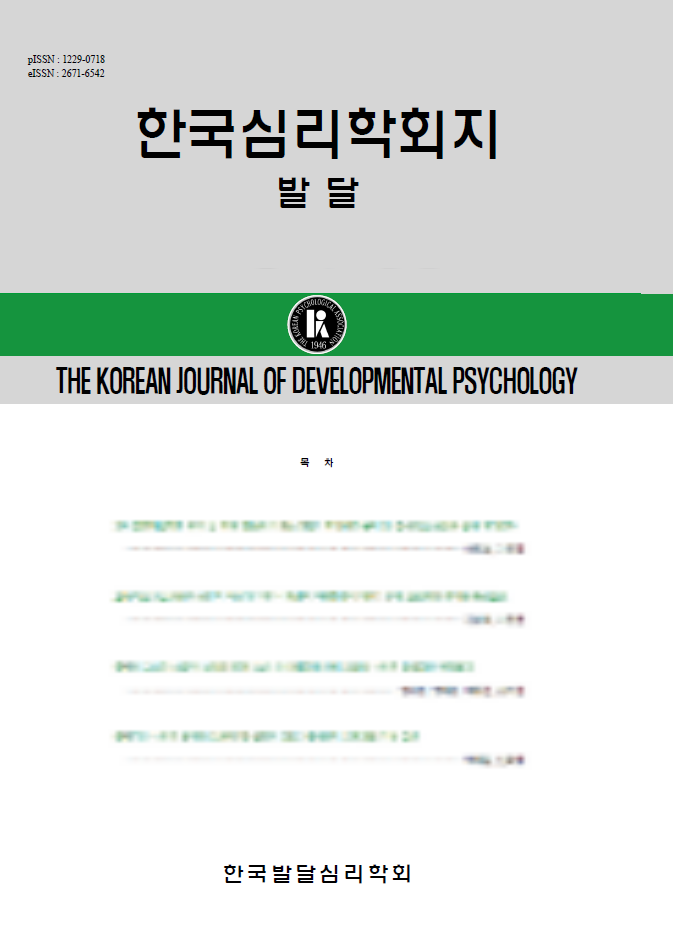open access
메뉴
open access
메뉴 ISSN : 1229-0718
ISSN : 1229-0718

본 연구는 한글 자소-음소 대응(grapheme-phoneme correspondences) 규칙을 거의 터득한 초등학교 2학년 아동들의 영어단어 읽기 발달을 살펴본 것이다. 본 연구에 참여한 44명의 아동들은 한글읽기기술 수준에 따라 상위집단과 하위집단으로 나뉘어졌다. 실험 1에는 단음절로 된 한글과 비슷한 패턴의 친숙 단어와 비친숙 단어 과제가 사용되었다. 실험 결과 두 집단 아동들의 읽기 수행은 유의미한 차이가 있었고, 두 집단 아동 모두는 친숙 영어단어를 비친숙 영어단어보다 더 잘 읽을 수 있었다. 실험 2는 한글과 다른 패턴(CVCV)의 친숙 단어와 한글과 비슷한 패턴(CVC)의 비친숙 단어 과제를 사용하였다. 실험 결과, 두 집단 아동들은 모두 친숙 CVCV단어보다 비친숙 CVC 단어를 더 잘 읽을 수 있었고 두 집단 간의 읽기 수행은 유의미한 차이가 있었다. 또한 한글 읽기 상위집단은 한글과 유사한 CVC단어뿐만 아니라 CVCV 단어와 2음절 단어도 50% 이상의 아동이 정확하게 읽을 수 있었던 반면, 하위집단의 50% 이상은 한글과 같은 철자패턴의 단음절 CVC 단어만을 정확하게 읽을 수 있었다. 본 연구 결과는 영어단어 읽기에서 학령초기 한국아동들의 자소-음소 대응적용 능력은 한글읽기 수준에 따라 다르고, 영어단어의 철자패턴에 따라 자소 수준의 자소-음소 대응뿐만 아니라 보다 큰 철자단위의 문자-소리 대응규칙도 적용할 수 있고, 영어단어 읽기가 발달할수록 단어의 친숙성보다는 단어의 철자패턴에 의해 더 영향 받을 수 있음을 시사한다.
This study investigated English word reading development of the Korean second graders who acquired grapheme-phoneme(G-P) correspondence rules. Forty four of children divided into two groups (High and Low in Hangul reading skill). In experiment 1, both high and low groups could read more familiar CVC words than unfamiliar CCVCC, and there were significant differences between High and Low group. In experiment 2, two groups could read more unfamiliar CVC words than familiar CVCV and there were significant differences between High and Low group, and 50% of the High group could read CVC as well as CVCV and bisyllables, however 50% of the Low group could only read CVC. These results suggest that Korean second graders can apply G-P rules as well as letter-sound correspondences of some larger orthographic unit according to the English word spelling patterns, their G-P correspondences skill is different according to the level of Hangul reading skill, and the grower their English reading skill, the more they were influenced by the type of spelling patterns than the familiarity of words.
윤혜경, (1997) 아동의 한글 읽기 발달에 관한 연구:자소-음소 대응규칙의 터득을 중심으로,
Adams,M.J., (1990) Beginning to read: Cambridge, Bradford
Backman, J., (1984) Acquisition and use of spelling-sound correspondences in reading, Journal of Experimental Child Psychology
Barron, R. W., (1977) How children?get meaning from printed words, Child Development
Bowey, J. A., (1996) Further evidence that orthographic rime usage in nonword reading increases with word-level reading proficiency, Journal of Experimental Child Psychology
Caravolas M., (1993) The effect of oral and written language input on children's phonological awareness: A cross-linguistic study, Journal of Experimental Child Psychology
Chow, B. W.-Y., (2005) Phonological processing skills and?early reading abilities in Hong Kong Chinese kindergarteners learning to read English as a second language, Journal of Educational Psychology
Coltheart, V., (1992) Journal of Experimental Psychology: Learning, Memory and Cognition, Cognition
Coltheart,M., (1978) Lexical access in simple reading tasks in : Strategies of information processing, Routledge and Kegan Paul
Comeau, L., (1999) A longitudinal study of phonological processing skills in children learning to read in a second language, Journal of Educational Psychology
Ehri,L.C., (1987) Learning to read and spellords, Journal of Reading Behaviour
Firth,U., (1985) Beneath the surface of developmental dyslexia in : Surface dyslexia , Erlbaum
Fox, B., (1980) Phonemic analysis and severe reading disability in children, Journal of Psycholinguistic Research
Goswami,U., (1986) Children's use of analogy in learning to read: A developmental study, Journal of Experimental Child Psychology
Goswami,U., (1988) Orthographic analogies and?reading development, The Quarterly Journalof Experimental Psychology
Guthrie, J. T., (1977) Letter-sound complexity in learning to identify words, Journal of Educational Psychology
Kirby, J. R., Naming speed and phonological awareness as predictors of reading development, Journal of Educational Psychology
Marsh, G., (1981) A cognitive- developmental?approach to reading acquisition in : Reading?research. Advances intheory and practice, Academic Press
Smiley, S. S., (1976) The pronunciation of familiar, unfamiliar and synthetic words by good and?poor adolescent readers, Journal of ReadingBehavior
Treiman, R., (1981) Segmental analysis ability: Development and relation to?reading ability in : Reading research: Advances in theory and practice., Academic
Treiman, R., (1983) Phonemic analysis training helps children benefit from?spelling-sound rules, Memory & Cognition
Treiman, R., (1990) Are there qualitative differences in reading behavior between dyslexics and normaleaders, Memory & Cognition
Wagner, R. K., (1987) The nature of phonological processing and its causal role in the acquisition of reading skills, Psychological Bulletin
Wagner, R. K., (1994) Development of reading-related phonological processing abilities:?New evidence of bi-directional causality from a latent variable longitudinal study, Developmental Psychology
Wagner, R. K., (1997) Changingrelations between phonological processing abilities and word-level reading as childrendevelop from beginning to skilled readers: A?-year longitudinal study, Developmental Psychology
Waters, G. S., (1984) Children's and adults' use of spelling-sound information in three readingtasks, Memory & Cognition
